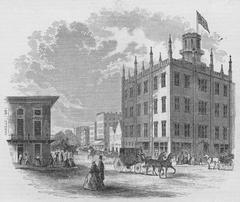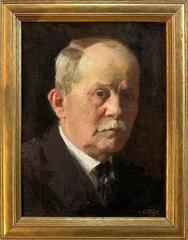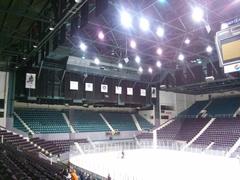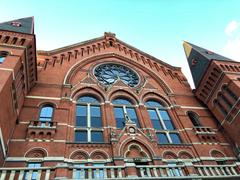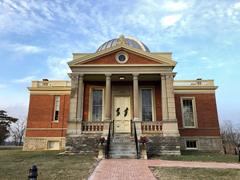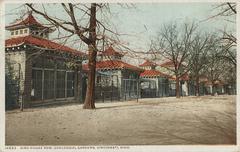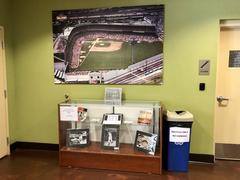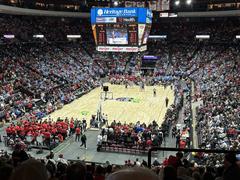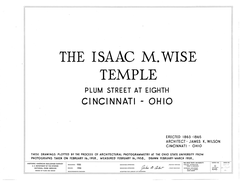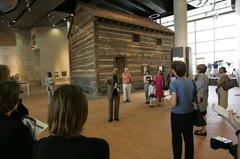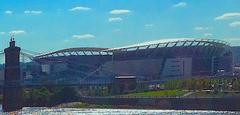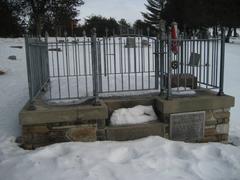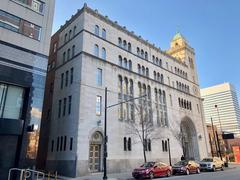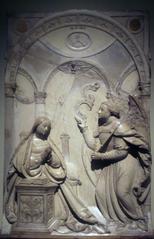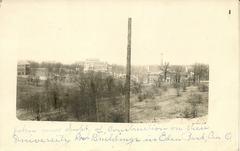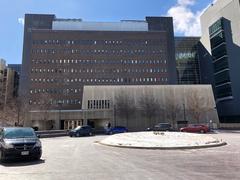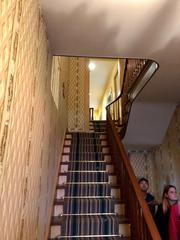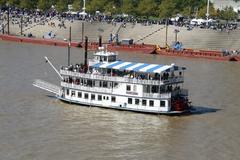
Lytle Park Historic District Cincinnati: Visiting Hours, Tickets, and Attractions Guide
Date: 04/07/2025
Introduction: Discover Cincinnati’s Historic Urban Oasis
Nestled within downtown Cincinnati, the Lytle Park Historic District is a captivating destination that exemplifies the city’s rich historical tapestry, architectural beauty, and thriving cultural scene. Once the site of Fort Washington and later the Lytle family estate, this district has evolved from its frontier beginnings into a model of historical preservation and urban planning. Today, it offers visitors lush green spaces, iconic monuments, and renowned cultural institutions—all seamlessly integrated atop the innovative Lytle Tunnel. Whether you’re a history aficionado, architecture enthusiast, or simply seeking a scenic retreat, Lytle Park Historic District promises an unforgettable encounter with Cincinnati’s past and present (Cincinnati Preservation Association; Everything Explained Today).
Table of Contents
- Introduction
- Early History and Founding
- Urban Development and Preservation
- Architectural Highlights
- Cultural Significance
- Visiting Information
- Notable Residents & Community Impact
- District Boundaries & Key Features
- Recognition & Awards
- Frequently Asked Questions (FAQs)
- Conclusion & Tips for Visitors
- References
Early History and Founding
The land now known as the Lytle Park Historic District was originally forested and became historically significant with the construction of Fort Washington in 1789, a frontier outpost crucial to Cincinnati’s early settlement (Everything Explained Today). Following the fort’s decommissioning, the site became home to the influential Lytle family. William Lytle II, a prominent land surveyor, philanthropist, and civic leader, played a major role in shaping the city’s early growth. The family’s homestead and their civic contributions laid the groundwork for the area’s transformation into a revered neighborhood (u-s-history.com).
By the 1820s, the district began attracting Cincinnati’s elite, who constructed grand residences close to the Ohio River and the city’s commercial heart. In 1905, the city acquired the land, officially dedicating Lytle Park in 1907 as a public green space (Cincinnati Parks).
Urban Development and Preservation
During the 19th and early 20th centuries, the district evolved with the construction of the Miami and Erie Canal, spurring both residential and commercial development. The architectural landscape came to include elegant homes, townhouses, and cultural institutions.
The mid-20th century brought new challenges. The 1960s saw plans for the Lytle Tunnel, which threatened the park and historic buildings. Vigorous advocacy by preservationists and residents led to a groundbreaking solution: constructing the tunnel beneath the park, thus preserving both the green space and surrounding historic structures. This innovative approach set a standard for urban preservation and infrastructure integration (National Park Service; Federal Highway Administration).
Architectural Highlights
The district features a rich array of architectural styles, reflecting American urban design from the early 19th to the 20th century. Noteworthy structures include:
- The Literary Club of Cincinnati (1845): Greek Revival mansion, a hub for literary and civic leaders (The Literary Club).
- Taft Museum of Art (circa 1820): Federal-style home of the Taft family, now a National Historic Landmark with an extensive art collection (Taft Museum of Art).
- Phelps Building (1926): Renaissance Revival architecture, now the Residence Inn at The Phelps with a rooftop bar overlooking the park (The Phelps Cincinnati).
The district’s streetscapes are adorned with brick sidewalks, mature trees, and period lighting, preserving the neighborhood’s historic ambiance.
Cultural Significance
Lytle Park Historic District symbolizes Cincinnati’s dedication to cultural preservation and adaptive reuse. The Abraham Lincoln statue by George Grey Barnard, commissioned in 1917 by the Taft family, stands as an evocative tribute to Lincoln’s 1859 visit and the city’s Civil War heritage (Smithsonian Institution).
The park also features the U.S. Marine Corps Memorial, commemorative plaques, and a bandstand that hosts concerts and public events. The district continues to serve as a gathering place for civic celebrations, educational programs, and cultural festivals (u-s-history.com).
Visiting Information
Hours & Admission
- Lytle Park: Open daily from dawn until dusk; admission is free (Cincinnati Parks).
- Taft Museum of Art: Open Tuesday–Sunday, 11 AM–5 PM (extended Thursdays to 8 PM); closed Mondays. Admission: $15 adults, $12 seniors/students, free for children under 12 (Taft Museum Tickets).
- Literary Club: Private; access by invitation or on special public tour days.
Accessibility
The park and Taft Museum are ADA accessible, featuring paved paths, ramps, and accessible restrooms. Visitors with mobility needs should check specific venue details prior to arrival (City of Cincinnati accessibility).
Guided Tours & Events
- Guided walking tours are available seasonally via the Cincinnati Preservation Association and other local organizations (Cincinnati Preservation Association).
- Self-guided tours are available through apps like GPSmyCity.
- Events: The district hosts outdoor concerts, art fairs, and special museum exhibitions—check event calendars for details (Taft Museum Events; City of Cincinnati events calendar).
Nearby Attractions
- Fountain Square
- Contemporary Arts Center (Contemporary Arts Center)
- Findlay Market
- Over-the-Rhine District (Over-the-Rhine District)
- Ohio Riverfront
Public transport and parking options are widely available; the Cincinnati Bell Connector Streetcar and bus lines run nearby (Cincinnati Bell Connector official site).
Photographic Spots
- Abraham Lincoln statue at sunset
- Taft Museum’s neoclassical façade
- Historic townhouses and lush gardens
Images of the park’s landscapes, monuments, and architecture can be found in online galleries and virtual tours (Cincinnati Parks Virtual Tour).
Notable Residents & Community Impact
The district’s history is punctuated by the influential Taft family (relatives of President William Howard Taft), whose former home is now the Taft Museum of Art (White House Historical Association). The Literary Club, founded in 1849, remains a bastion of Cincinnati’s intellectual community. The preservation of the park and its historic buildings—especially through the Lytle Tunnel project—stands as a national example of community-driven urban conservation (Federal Highway Administration).
District Boundaries & Key Features
The Lytle Park Historic District encompasses approximately 9 acres, bounded by Fourth Street (north), Pike Street (east), Third Street (south), and Main Street (west) (National Park Service). Notable features include:
- Lytle Park: Gardens, walking paths, and monuments
- Taft Museum of Art: Landmark art museum and historic residence
- Literary Club: Greek Revival clubhouse
- Phelps Building: Now a boutique hotel with amenities
- U.S. Marine Corps Memorial: Commemorative boulder and plaque
Recognition & Awards
The district’s preservation has garnered national accolades, including recognition from the American Planning Association and the National Trust for Historic Preservation (National Trust for Historic Preservation). Its innovative balance of infrastructure and historic character continues to inspire similar projects nationwide.
Frequently Asked Questions (FAQs)
Q: What are the visiting hours for Lytle Park?
A: Open daily from dawn to dusk; admission is free.
Q: Is there an admission fee for the Taft Museum of Art?
A: $15 for adults, $12 for seniors/students, free for children under 12.
Q: Are guided tours available?
A: Yes, through local organizations and self-guided via mobile apps.
Q: Is the district wheelchair accessible?
A: The park and most public areas are accessible, though some historic streets may be uneven.
Q: Are pets allowed in Lytle Park?
A: Yes, pets are permitted on leashes.
Q: What other Cincinnati historical sites are nearby?
A: Fountain Square, Contemporary Arts Center, Over-the-Rhine District, and the Ohio Riverfront.
Conclusion & Tips for Visitors
The Lytle Park Historic District offers a compelling mix of Cincinnati’s frontier heritage, architectural splendor, and modern urban vibrancy. Visitors can experience tranquil gardens, iconic monuments, and exceptional museums, all within a walkable, accessible neighborhood. Preservation efforts, innovative infrastructure, and community spirit make this district a model of heritage conservation.
Visitor Tips:
- Plan your visit for spring or fall to enjoy the park’s floral displays.
- Book museum tickets and guided tours in advance.
- Wear comfortable shoes for exploring cobblestone streets.
- Check event calendars for concerts and exhibitions.
- Consider staying at the historic Lytle Park Hotel for a full experience.
To enhance your visit, download the Audiala app for guided audio tours, insider tips, and up-to-date event listings. Stay connected by following local tourism updates and related articles on Cincinnati’s historic neighborhoods.
References
- Cincinnati Preservation Association
- Everything Explained Today
- Taft Museum of Art
- Great Wide Travel: Lytle Park Hotel
- National Park Service
- Smithsonian Institution: Abraham Lincoln Statue
- Federal Highway Administration
- National Trust for Historic Preservation
- Everything Cincy
- Cincinnati Parks
- u-s-history.com
- The Literary Club
- Contemporary Arts Center
- Over-the-Rhine District

